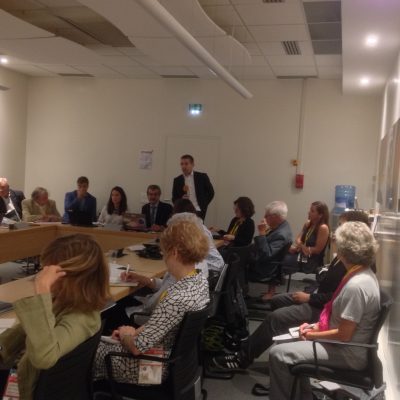Next month, the European Space Agency’s Schiaparelli module is scheduled to land on Mars, the first stage of a landmark mission to determine whether there is evidence of life on the red planet, a group of AAPA members learned on Sept. 14.
The joint ESA-Russian Roscosmos project will pave the way for a second mission in 2020 to dig for life under the surface. If successful, the Oct. 19 landing will represent a significant moment for European space exploration, Fabio Favata, of the ESA’s directorate of Science and Robotic Exploration, told the meeting.

“Nobody really knows what’s going on under the surface and this is really the goal of this mission,” he said.
Taking part alongside Mr. Favata in the meeting with 16 AAPA journalists were several top leaders of ESA, including Jean Bruston, head of the EU Policy Office, Simonetta Cheli, of the directorate of earth observation programs, Lucia Linares, head of the launcher policy office, and Leopold Eyharts, an ESA astronaut.
They covered a wide range of topics. October’s Mars landing will come just after ESA completes its Rosetta space probe mission, which marked the first landing of a probe on a comet. And they also talked about how Britain’s planned exit from the European Union will impact Europe’s future space exploration possibilities.
– Lisa Bryant